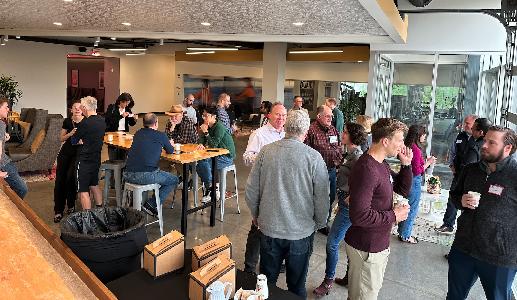When WMATA announced that it would be shutting down the entire D.C. Metro system for a full 29 hours, mid-week, for safety checks, Twitter immediately erupted with apprehension, anger and a good number of jokes.
BREAKING: @wmata
— Matt Viser (@mviser) March 15, 2016
Thanks @LinkedIn, but I think I'll keep my eyes out for a better offer. #wmata pic.twitter.com/wjJFpM4dMV
— Rob Runyan (@RobRunyan) March 16, 2016
Will anyone be fired for gross mismanagement of DC Metro?Closing entire subway on workday!Totally destructive. Someone must be responsible.
— Newt Gingrich (@newtgingrich) March 17, 2016
But hey, safety first. So as the clock hit midnight the trains slowly came to a stop — which actually looks pretty cool in this viz tweeted out by D.C. metro transit app MetroHero:
Timelapse of #WMATA Metrorail midnight shutdown. Good night, sweet prince. #dcmetro #WMATAshutdown #dcmetroshutdown pic.twitter.com/AhsEaLUfx3
— MetroHero (@dcmetrohero) March 16, 2016
And with that, the riders of the country’s second busiest metro system needed to find some other way to get around. So what did we do? We biked (in record numbers), we Uber’d (though it was expensive) and we drove (though the traffic was bad).
And, because this is D.C., we created some cool data visualizations to make sense of it all.
DDOT reported that the Metropolitan Branch Trail saw 1,280 bike trips on Wednesday, a 194 percent increase over Tuesday. This is actually the highest ever bike day on the MBT, ironically beating out Bike To Work Day 2015 by 100 rides. This graph shows popular commute times:
Bloomberg Business, meanwhile, used the Metro shutdown to put together three data visualizations of the morning commute — one each for traffic, Uber surge pricing and Capital Bikeshare availability between the hours of 7:30 a.m. and 10:30 a.m.
The visualizations look pretty much as you’d expect — roads clogged, Uber spikes in popular residential areas (mostly NW and Arlington) and Capital Bikeshare bikes congregated downtown. Still, it’s cool to see this kind of data in action.
In similar transportation data news, though not related to the Metro shutdown, DataLensDC’s latest visualization shows when (and how much) Uber surge pricing hits various neighborhoods.
There are some gems in there, including the fact that prices surge just about everywhere in the District at 8 a.m. on weekdays.
Feeling excited and inspired by all this transport data? Got a related project you’re working on? Go check out Transportation Techies — their monthly meetups take deep dives into cool new hacks for various modes of city transportation. You just might find your people.
Join the conversation!
Find news, events, jobs and people who share your interests on Technical.ly's open community Slack

DC daily roundup: Tyto Athene's cross-DMV deal; Spirit owner sells to Accenture; meet 2GI's new cohort

DC daily roundup: $10M to streamline govt. contracting; life sciences might dethrone software; Acadia's new $50M

DC daily roundup: the DMV's VC cooldown, SmartSigns for safer driving; Rep. Schiff's AI copyright bill




